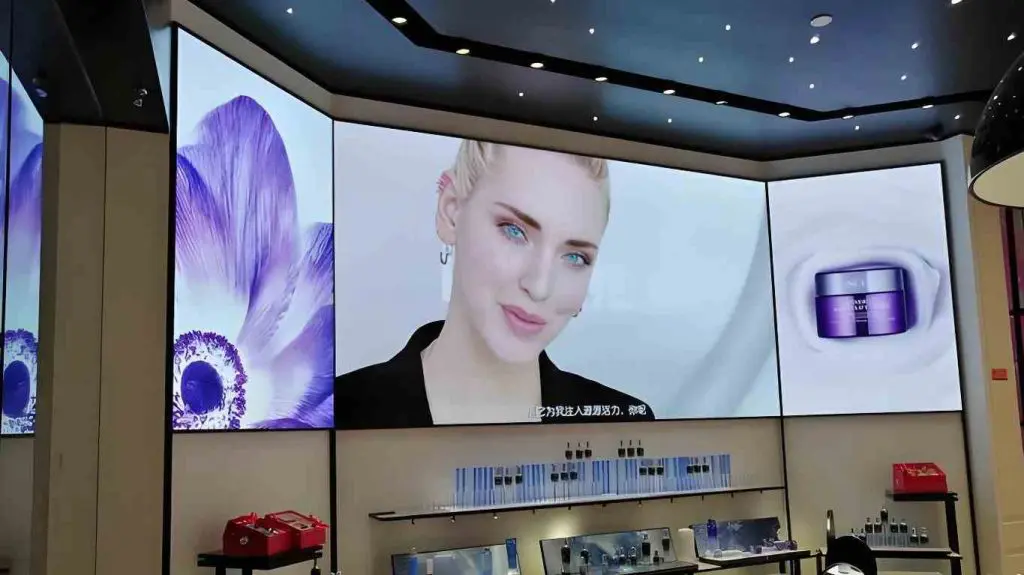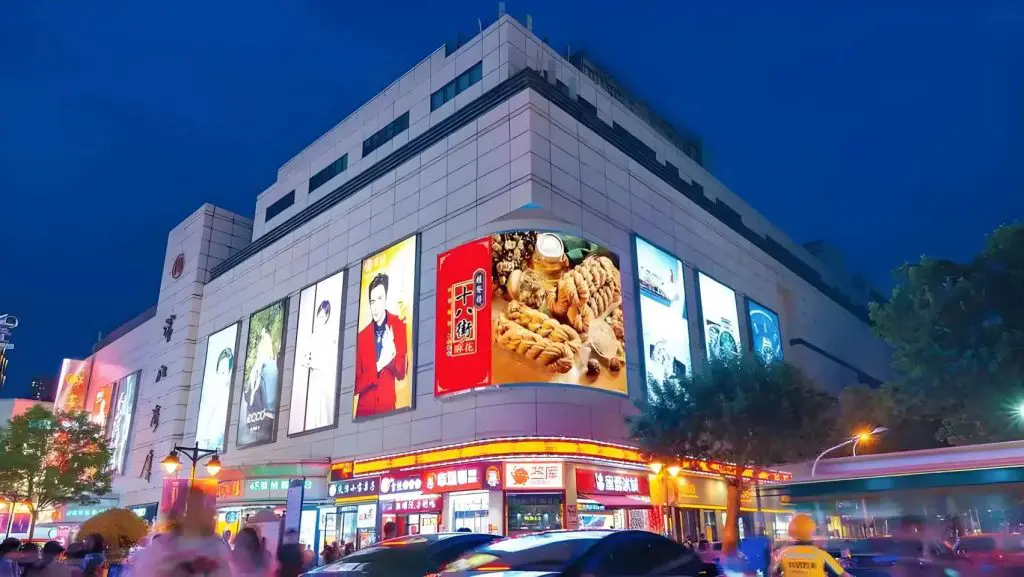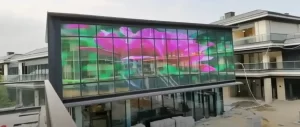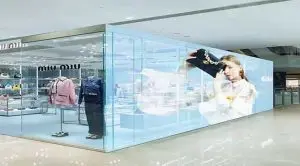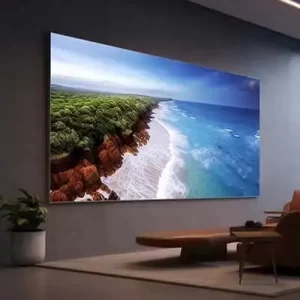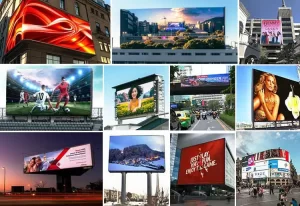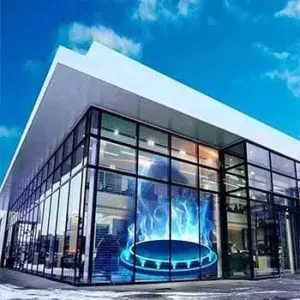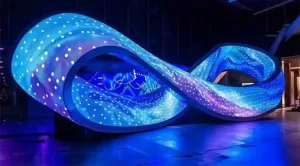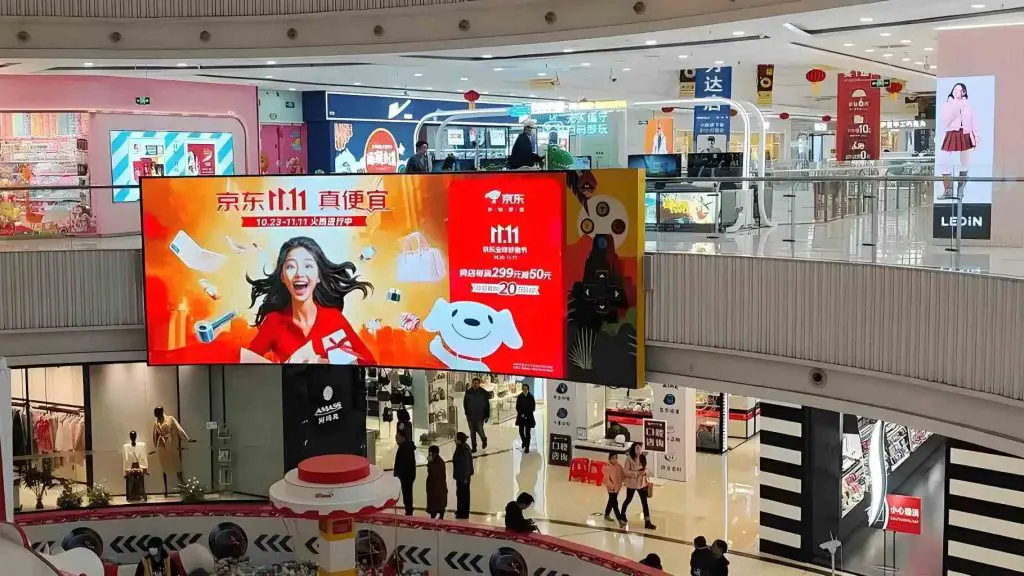
A shopping mall LED screen is a high-impact digital display designed to enhance the shopping experience, promote brands, and engage visitors. These screens are commonly used for advertising, event promotions, digital wayfinding, and entertainment within malls. With their vibrant visuals, dynamic content capabilities, and ability to attract attention, LED screens have become a must-have for modern retail environments.
This guide explores the features, benefits, applications, and tips for selecting the right LED screen for shopping malls.
What Is a Shopping Mall LED Screen?
A shopping mall LED screen is a high-resolution digital display made with LED panels that project dynamic content such as advertisements, videos, and announcements. These screens are strategically placed in high-traffic areas like entrances, atriums, food courts, or escalators to capture the attention of shoppers. They are available in various sizes and configurations, making them adaptable to the architectural design of any mall.
Key Features of Shopping Mall LED Screens
-
High-Resolution Visuals
- Supports HD, 4K, or 8K resolutions for sharp and detailed content.
- Fine pixel pitches (e.g., P0.6 to P3) ensure clear visuals even up close.
-
Customizable Sizes and Shapes
- Modular design allows for screens in any size or shape, including curved, cylindrical, or irregular designs.
- Perfect for creative installations to complement the mall’s architecture.
-
Dynamic Content Capabilities
- Displays videos, animations, static images, or live feeds.
- Real-time updates via a user-friendly content management system (CMS).
-
High Brightness and Contrast
- Brightness levels of 800–1,500 nits for indoor screens and up to 5,000 nits for semi-outdoor areas ensure excellent visibility.
- Wide color gamut for vibrant and engaging visuals.
-
Durability and Longevity
- Designed for long-term use in high-traffic environments, with a lifespan of 50,000–100,000 hours.
- Resistant to wear and tear, ensuring consistent performance.
-
Energy Efficiency
- Consumes less power than traditional digital displays, reducing operational costs.
-
Seamless Integration
- Can be integrated with other systems, such as digital wayfinding, interactive directories, or social media feeds.
Advantages of Shopping Mall LED Displays
1. Enhanced Customer Engagement
LED signage captures attention with its vibrant visuals and animations, enabling businesses and retailers to connect more effectively with shoppers.
2. Increased Revenue Through Advertising
Shopping centers can generate additional income by offering advertising slots on their digital boards to tenants and third-party brands.
3. Real-Time Content Updates
With a content management platform, mall operators can instantly update media like announcements, promotional campaigns, or event schedules.
4. Improved Visitor Experience
Interactive digital wayfinding systems and entertainment-focused content enhance the overall shopping experience, encouraging visitors to stay longer.
5. Sleek and Modern Aesthetics
A well-placed video wall gives malls a polished and high-tech appearance, making the space more appealing to shoppers.
6. Multi-Purpose Usage
From displaying advertisements to live-streaming events, LED video displays serve multiple functions, maximizing their value.
Applications of LED Screens in Shopping Malls
1. Retail Advertising
- Promotions for Tenants: Highlight special offers, new product launches, or exclusive deals from stores within the mall.
- Sponsored Ads: Rent advertising space to external brands for additional revenue.
2. Wayfinding and Directories
- Interactive Touchscreens: Help visitors navigate the mall with digital maps and store locators.
- Digital Navigation Boards: Display directions and store categories for easy navigation.
3. Event Announcements
- Activity Promotions: Advertise upcoming events, seasonal campaigns, or community activities.
- Live Event Streaming: Display ongoing entertainment, concerts, or competitions to different areas of the shopping complex.
4. Entertainment Content
- Large-Scale Video Walls: Play music videos, animations, or event visuals in atriums or gathering spaces to enhance ambiance.
- Children’s Zones: Provide engaging content like cartoons or interactive games for kids.
5. Food Court Signage
- Menu Boards: Showcase menu options, combo deals, or nutritional details for food court vendors.
- Promotional Displays: Highlight time-sensitive offers or best-selling dishes.
6. Architectural Displays
- Atrium Installations: Use large LED panels or cylindrical screens to create bold centerpieces.
- Exterior Facades: Install digital banners on the mall’s exterior to promote brands, events, or seasonal campaigns.
How to Select the Right LED Display for Shopping Malls
1. Pixel Pitch for Sharpness
The pixel pitch determines the clarity of the content:
- P0.6–P2.5: Ideal for close-range viewing, such as interactive kiosks or small indoor displays.
- P3–P5: Suitable for medium-range viewing, such as atrium displays or large video walls.
- P5+: Best for exterior billboards and large displays viewed from a distance.
2. Brightness Levels
- Indoor Screens: Brightness of 800–1,500 nits is sufficient for most indoor environments.
- Semi-Outdoor Screens: Brightness of 5,000–10,000 nits ensures visibility in naturally lit areas, like near glass entrances.
3. Size and Placement
- Choose a size that maximizes visibility without obstructing foot traffic.
- Place screens in high-traffic areas, such as food courts, escalators, or atriums, for maximum exposure.
4. User-Friendly CMS
- Opt for a display system with a reliable content management solution for easy scheduling and real-time updates.
5. Durability and Maintenance
- Look for screens with robust materials and modular designs for easier maintenance in high-traffic areas.
Estimated Costs of Shopping Mall LED Displays
The cost of an LED display depends on factors like pixel pitch, size, and additional features. Below is a general price range:
| Type of Display | Pixel Pitch | Estimated Cost (Per m²) |
|---|---|---|
| Small Indoor Display | P1.2–P3 | $600–$2,000 |
| Medium Atrium Display | P3–P5 | $500–$1,000 |
| Large Exterior Display | P5+ | $400–$1,200 |
| Interactive Touchscreen | P1.5–P2.5 | $1,000–$2,000 |
Future Trends in LED Displays for Shopping Malls
-
Transparent LED Screens
- Ideal for storefront displays, allowing visibility into stores while showcasing digital content.
-
Interactive Displays
- Touch-enabled screens provide engaging interactive experiences for wayfinding, games, or promotions.
-
Eco-Friendly Designs
- Manufacturers are adopting energy-saving technology and recyclable materials to reduce environmental impact.
-
Creative Configurations
- Flexible, curved, and cylindrical screens are becoming popular for unique architectural integrations.
-
AI-Driven Content
- Artificial intelligence enables personalized advertisements and data-driven promotional strategies.









